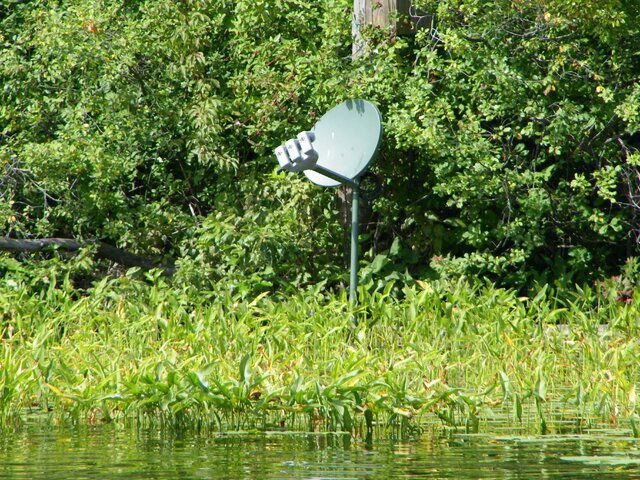My original statement, "So, if everything is done just right, you should not have any problems with 320' of RG11 and you don't need any amplifiers or switches." is a conclusion base on some basic facts which you cannot dispute.
As far as your "math", you are off only by ~150% for the RG11 losses and the rest of your "numbers" must be as "accurate" too.
Actually, I was only off by a little bit, which isn't bad for rough calculations at 2:30 in the morning. You sure seem to like the quote marks too. Let's go over this step by step, shall we? You might be interested in looking at the cable attenuation calculator found here:
Coaxial Cable Attenuation Calculator
RG11 cable attenuates at 4.1 Db per 100 feet at 950 MHz, and at 6.6 Db per 100 feet at 2150 MHz. You ALWAYS build your system based on the part of the system with the most loss, so we go with the calculations at 2150 MHz. A normal reading at the dish for a DPP Triple, is about -31 Db. Assuming a direct run of 320 feet to the termination point (ground block, switch, diplexer) you now have a signal at 2150 MHz of -52.12 Db. This is best case based on proper fittings used, properly installed and torqued. It also assumes decent quality RG11. Remember, that at this point, you're already below the minimum signal the quality standards allow, which is -50. Now, you add the ground block. Assuming the fittings are done right, it's properly torqued and a decent quality ground block is used, the loss should be negligible. Let's now add a diplexer. (assuming this is a dual tuner) A Holland DPD2, which is an excellent quality diplexer has a signal loss on the satellite leg of 1.5 Db. From there, let's say the room is a 50 foot run from the diplexer. Assuming good quality RG6, you will have a loss of 4.85 Db. At last we get to the receiver, and the second diplexer. (or Triplexer) subtract another 1.5 Db. Your signal levels are now sitting at a whopping -59.97. If It's a single tuner, add 3 Db (removing the diplexers) for -56.97 Db. At -55 STB operation is intermittent at best. He would need, (at least) a 14Db amplifier like the one I showed in my previous post. Small bullet amps can work fine too, (They usually are 20Db) but if he's running 3 lines, he would be better off using an auto-leveling 3 port amp. The cost comes out the same, and they amplify more evenly. A 14 Db amplifier puts you at just about -46, which really is fine.


